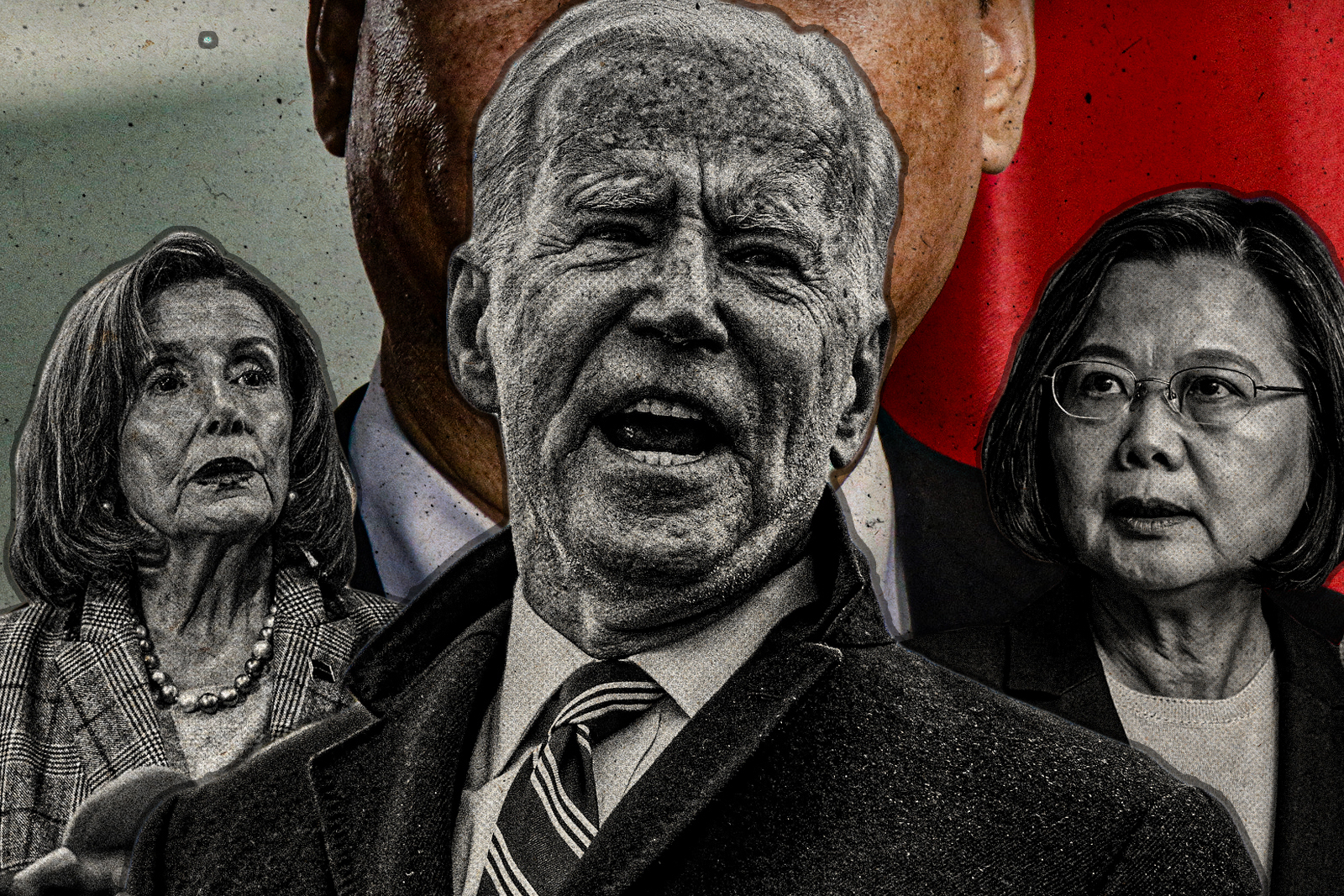
Unpacking Pelosi’s Taiwan Trip – What We’ve Learned in the Following Weeks
The controversy surrounding U.S. House Speaker Nancy Pelosi’s visit to Taiwan in early August was only surpassed in scale by the Chinese military response that surrounded the island nation itself once she left. Speaker Pelosi’s two-day trip made relations between the U.S. and China worse in every identifiable way, yet was still the right course of action. The still-unfolding diplomatic fallout between Washington and Beijing will take substantial efforts on both sides to repair, while risks to regional security and Taiwan’s autonomy can no longer be clearly mitigated.
In analyzing the immediate developments taking place on either side of the Taiwan Strait following Pelosi’s trip, some key takeaways learned thus far:
DC’s Mixed Messages
When announced, Ms. Pelosi’s planned trip generated a frenzied stir of accusations from the CCP, creating an escalation of tensions in the Strait. When confronted about the Speaker’s plans and the Chinese response to it, President Biden’s muddled stance suggesting the trip was ill-advised openly broadcast indecision in America’s foreign policy towards Taiwan. The lack of a coordinated narrative between branches of the U.S. government regarding the Speaker’s trip was a strategic blunder, signaling uncertainty, misperception, and weakness to Beijing. The uncertainty and misperception translate in Beijing as wavering from the One China Policy. The weakness translates as a propaganda win for the CCP, validating its previous claims about U.S. fallibility.
Once publicly announced, Pelosi had no choice but to go ahead with her planned stop in Taipei. While the White House fumbled its position regarding the trip, exposing a strategic vulnerability to Beijing, backing down in the face of Chinese rhetoric and pressure was a non-option, and going through with the visit was important in demonstrating America’s resolve and unwavering support for Taiwan.
Taiwan’s Defense
China’s staggering military growth over the last two decades has put Taiwan well on its way to its only path of defending itself against a possible Chinese military invasion – a porcupine strategy. In its efforts to adopt these asymmetrical warfare capabilities, the U.S. has helped arm Taiwan. Under the Taiwan Relations Act, former President Donald Trump sold Taipei over $18 billion worth of arms over the course of his four-year term, including $5 billion in 2020 alone.
The Trump administration’s efforts in enhancing the defense of Taiwan, while eliciting the ire of Beijing as all U.S.-Taiwan arms sales do, was the former president’s shining moment in cross-Strait relations, helping to make up for a major lack of defense support and planning by prior administrations. However, Mr. Trump’s further forays into U.S.-Sino relations have proven shortsighted, ill-informed, and lacking strategic nuance, leading to the worst diplomatic atmosphere between the two world powers in decades.
The Trump years aside, the U.S. is currently not doing enough to prepare and defend Taiwan militarily, and efforts on that front must be accelerated rapidly. However, the war in Ukraine is severely hampering America’s peacetime capacity to produce the weaponry needed to both supply Ukrainian forces, while also possessing the armament needed to sell to Taiwan and keep U.S. stockpiles of available weaponry at levels required should the U.S. find itself in a military entanglement of its own.
Failed Diplomacy
U.S. diplomatic efforts with Xi Jinping’s China have been a failure. Rather than purposefully engaging Beijing, the Trump administration admonished and attacked China at every given opportunity, and scapegoated the country for many of America’s problems. While consistent, Trump’s strategy towards China developed no strategic policy and proved incompetent, lacking the necessary historic comprehension in dealing with Beijing.
But the incoherent and inconsistent policy and rhetoric coming from the Biden administration is likewise a failure. Mr. Biden was in office over a year before releasing any kind of China-specific policy, has failed to remove the Trump trade tariffs, hasn’t seriously attempted to reengage China or other regional states in multilateral trade and economic pacts, and has done nothing to assuage Beijing’s fears of containment, and inferiority within Western run global institutions such as the WTO, IMF, and World Bank – a huge missed opportunity to engage China within these liberal world structures. Finally, as the U.S. has been mired in domestic squabbles, Washington has neglected in engaging its regional allies in Asia. Many have felt ignored, and thus insecure. With Japan debating the future of Article 9 of its constitution and whether to build up its military, such a situation can easily snowball into a regional arms race, further heightening China’s security tensions.
PLA Power Projection
China’s military drills around Taiwan following Pelosi’s visit were telling what a future Chinese military engagement on the island could look like. As it stands now, the PLA’s ability to successfully invade and hold Taiwan is questionable at best, but PLA drills in the days following Pelosi’s trip showed what a Chinese strategy of forcefully ‘over taking’ Taiwan would likely entail – a naval blockade or quarantine, effectively cutting off Taiwan from the West and from the open oceans which are the island’s lifeline.
If the Chinese military maneuvers witnessed are a foretell of any future military campaign against Taiwan, it’s important to highlight that the U.S. does not at this time have a strategic plan to respond to such an act by the PLA, nor a tactical way in which to respond quickly. If China plans to cut off Taiwan from the rest of the world, a task its green-water navy is fully capable of executing today, the era of Taiwan’s autonomy is over. The U.S. cannot militarily engage without almost assuredly starting a shooting war with China. Of course, such an aggressive act by Beijing would be economically crippling, and Beijing has signaled military force is the last resort for reunification.
Where to Go from Here
While Ms. Pelosi’s visit and the following Chinese military drills has not created much of a stir among the Taiwanese themselves, the resulting diplomatic dustup between the U.S. and China has raised tensions in Washington and Beijing. In order to cool the temperature in the Strait and build back diplomatic ties with China, firstly the United States needs to earnestly turn its attention back outwards and strategically engage Beijing to bring China back into the liberal international order.
Time is running out to integrate Beijing into these rules-based structures, and serious attempts to include and integrate Beijing into their leadership and governance is the only way to persuade China that working within these existing structures is in its best interests, rather than forging new ones built in their own structural image.
Second, the U.S. needs to unequivocally and regularly communicate its commitment to the U.S. official line on One China and the policy of strategic ambiguity from the Shanghai Communique, and make clear the U.S. position has not and will not change across all levels of the U.S. government leadership. Additionally, Washington must continue ramping up defense allocations to Taipei, and take all measures available to defend the island within the bounds of the Taiwan Relations Act and the Six Assurances.
Finally, Washington must engage wholeheartedly with regional allies, international organizations like ASEAN, with trade pacts like RCEP and TPP, and regional states both unilaterally and bilaterally, and even work with the AIIB, making it clear the U.S. will continue to be an economic, political, and military stalwart in the region, reassuring U.S. allies, and making it clear to China any aggressive force taken to capture Taiwan is one that would be met not only by the United States but the region as a whole.
With a combination of rising military power, a domineering authoritative leader, and increasing economic and social issues within China, a dangerous set of circumstances are coming together at a time when communication, trust, and clarity is at their weakest in decades. Avoiding the match strike of misperception, miscommunication, and ambiguous intent should be the paramount mission for both Washington and Beijing in the coming weeks and months to reduce hostility and reestablish stronger pragmatic ties.

